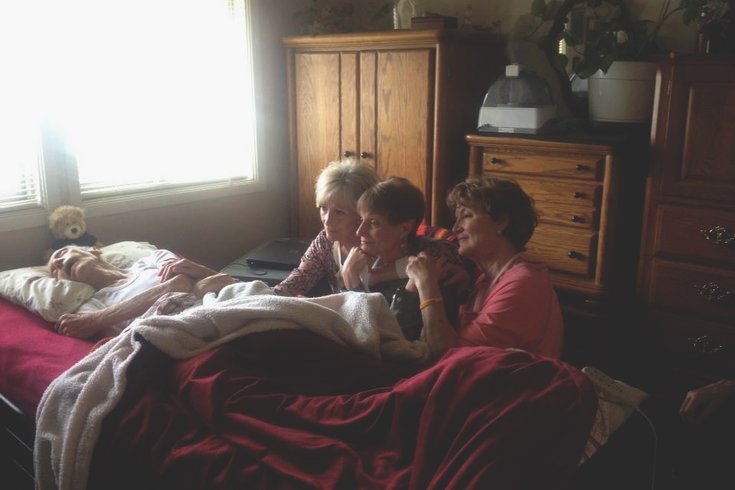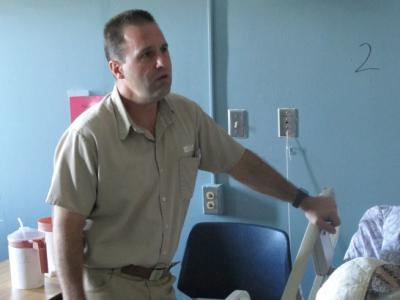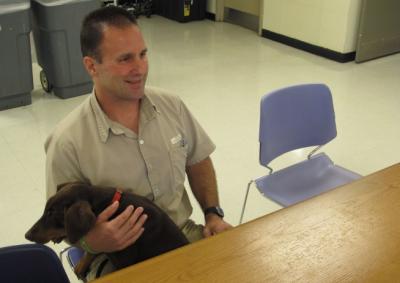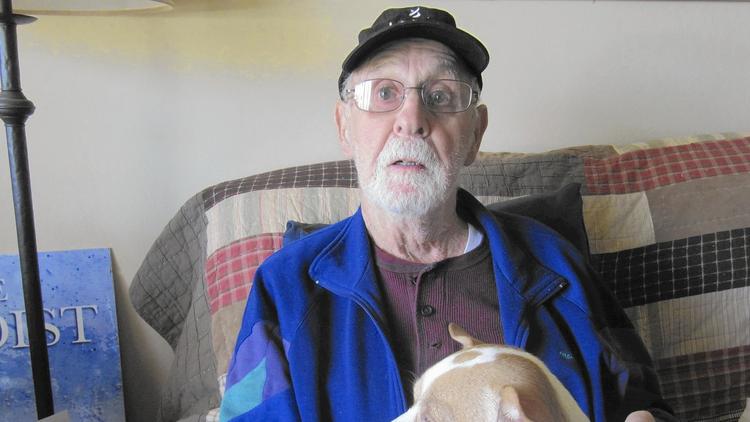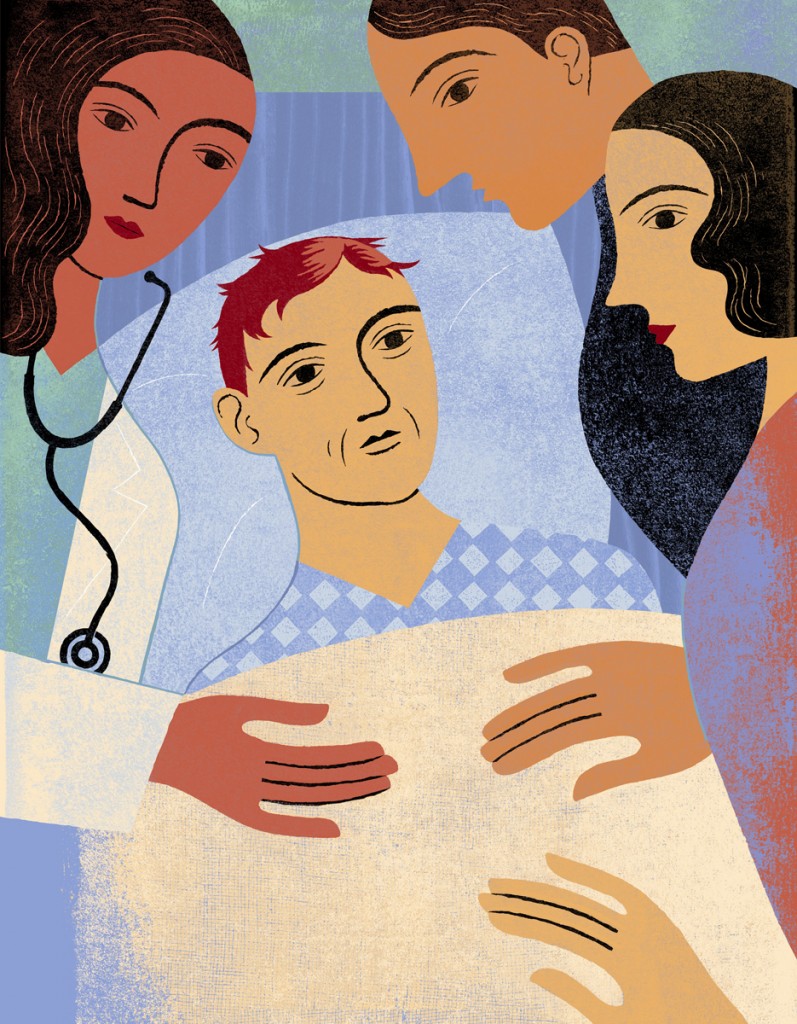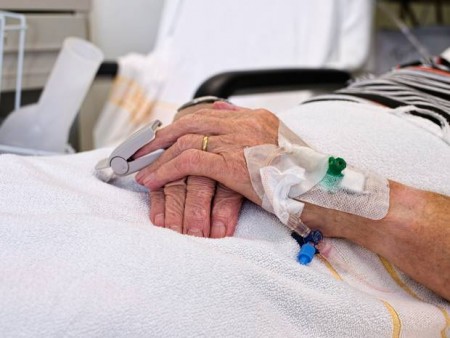Terminally ill cancer patient Barbara Wagner’s doctor wrote a prescription several years ago intended to extend her life a few extra months. But Oregon’s government-run healthcare program declined to pay for the pricey drug, saying the projected odds of the medicine’s keeping her alive were too low.
Adding to the distress of the rejection, Wagner later complained publicly, was what else was included in the denial letter she received. The state listed doctor-aided death as one of the treatment options that would be completely covered.
“[They] basically said if you want to take the pills, we will help you get that from the doctor and we will stand there and watch you die, but we won’t give you the medication to live,” Wagner said in a television interview at the time.
Wagner’s case became a flash point of the medical ethics debate over helping the terminally ill end their lives in Oregon, the state that pioneered the practice in the U.S. nearly two decades ago.
Now, as California pushes ahead with a similar initiative, experts say state officials here could face their own ethical controversies as they weigh details such as who should pay for life-ending care, particularly for patients in government-backed health plans.
Covering lethal prescribed drugs for such patients without also offering to pay for other far more costly end-of-life treatments could inadvertently pressure people into choosing the cheaper option, said Dr. Aaron Kheriaty, a UC Irvine psychiatrist and director of the university’s medical ethics program.
“It’s certainly a cost-saver,” he said.
Supporters of California’s law and other experts say it ensures life-ending decisions will be left to patients and that covering drugs that aid in dying won’t push people to make that choice. So few people will opt for doctor-assisted deaths, they argue, that the financial savings will be tiny compared with overall healthcare costs and won’t create a significant economic incentive for insurance carriers to even subtly encourage that medical alternative.
Under California’s End of Life Option Act signed by Gov. Jerry Brown this month, physicians, starting sometime in 2016, will be allowed to prescribe lethal drugs to adults diagnosed with terminal illnesses who are expected to die within six months and request assistance to end their lives.
The law does not require private insurance companies to cover such medicine. And state officials with Medi-Cal, the health program for the poor that covers more than 12 million people, say they haven’t determined whether their plan will pay for such treatments.
A state legislative committee analysis concluded that any costs or savings for Medi-Cal from legalizing doctor-aided death would be minor, depending on whether the lethal drugs are covered. The biggest projected expenditure would be about $323,000 to set up and operate a data system to manage paperwork associated with the program.
Many health advocates and experts expect Medi-Cal, like Oregon’s state-run health plan for the poor, to cover the life-ending treatment.
William Toffler, a family physician in Oregon, says California would be making a mistake. He contends that Medi-Cal officials would be forced into a new and significant ethical dilemma, balancing their responsibility to control costs and ration care with ensuring that patients receive the most effective medical treatment possible. The barbiturates prescribed to patients to end their lives cost about $1,500. Average healthcare spending in a patient’s last year of life is $33,486, according to federal data.
“It’s a terribly wrong-headed move. It’s a conflict of interest for doctors; it’s a conflict of interest for the state,” Toffler said.
Vermont and Washington — which more recently permitted physicians to write lethal prescriptions — and the federal government’s Medicare health plan do not cover the drugs. Representatives from both state programs declined requests to discuss their reasoning.
Officials from Oregon’s health plan say that physician-assisted death is just one of many covered medical options offered to terminally ill patients, along with hospice care and pain medications.
Wagner was told in 2008 that she had only a few months to live. She was prescribed a medicine that might have extended her life for a limited time, at a cost of $4,000 a month. Oregon’s health plan denied coverage, based on a policy that requires treatments to provide at least a 5% survival rate after five years.
Advocates said the case was blown out of proportion by the media and critics. The denial of the costlier drug wasn’t because of its price, but its low efficacy, they said.
“Barbara Wagner was not harmed by the Oregon aid-in-dying law. She was not harmed by the Oregon Medicaid system,” said Barbara Coombs Lee, president of the groupCompassion & Choices, which pushed for the law.
After the media focused on the case, the manufacturer of the drug prescribed by Wagner’s doctor offered her the pills free of charge. She died soon thereafter.
Oregon health officials subsequently halted the practice of listing lethal drugs as an alternative treatment offered to terminally ill patients who were denied other treatments under their coverage.
“I think the state Medicaid system learned to be a little more tactful,” Coombs Lee said.
Apparently learning from Oregon’s experience in Wagner’s case, California lawmakers included in the new legislation that insurance plans are prohibited from including in a treatment denial letter information on the availability of aid-in-dying drugs.
Christian Burkin, a spokesman for Assemblywoman Susan Talamantes Eggman (D-Stockton), who wrote the bill, said that “no one should be subjected to even the appearance or suggestion of being influenced to choose the end-of-life option.”
Some fear the pressures to choose assisted death could be more subtle.
Daniel Sulmasy, a physician and medical ethics professor at the University of Chicago, concluded in a 1998 research study that physicians inclined to conserve resources were more likely to write lethal prescriptions for terminally ill patients than those not concerned about keeping costs down.
That’s particularly worrisome, Sulmasy said in an interview, as California tries to manage the growing costs of Medi-Cal.
Under Obamacare, about a third of all Californians are now covered by the program, and its costs have climbed 74% since 2013 to more than $91 billion a year.
The federal government covers most of the costs but will begin shifting the expenses to the state after next year. California is already struggling with an $18-billion annual contribution, and that will rise in coming years.
Sulmasy also argues that as lethal treatments for the dying become more common, patients could face societal pressures from friends and relatives to unburden their caregivers or avoid racking up medical bills that drain family wealth.
But Oregon patient data have shown little evidence of that, says Coombs Lee, who was a nurse before she cowrote Oregon’s Death With Dignity Law. Of the roughly 860 people who have died in this way in Oregon since the law was enacted in 1997, 98% had state or private health insurance — and private plans tend to cover more end-of-life medical treatments.
Coombs Lee pointed to a new study that shows Oregon has some of the nation’s highest rates of hospice usage — and lowest levels of potentially concerning hospice care. She said that indicates, overall, that the state’s death with dignity law is improving end-of-life care.
“There’s no red flags,” Coombs Lee said.
Ezekiel Emanuel, an oncologist and bioethicist at the University of Pennsylvania, said that doctor-aided death for the terminally ill doesn’t offer insurers much opportunity to cut expenses.
“It’ll have an almost undetectable impact on healthcare costs,” said Emanuel, who helped draft the federal Affordable Care Act.
A 1998 study he conducted estimated legalization of lethal prescriptions nationwide would save less than 0.1% of total healthcare spending, chiefly because very few people would want them.
“It’s a law for the 0.1%,” he said.
Complete Article HERE!


